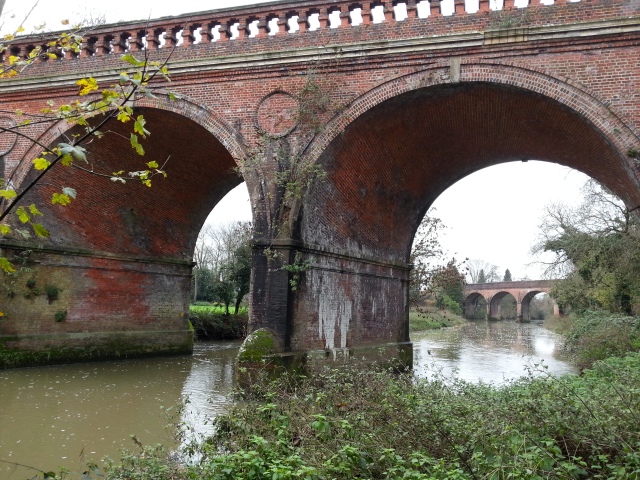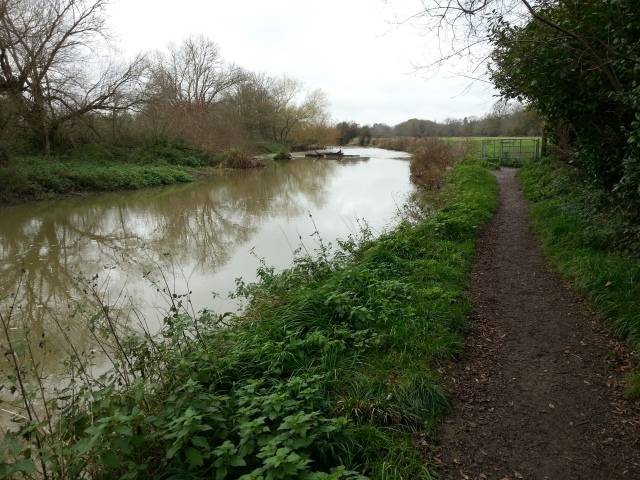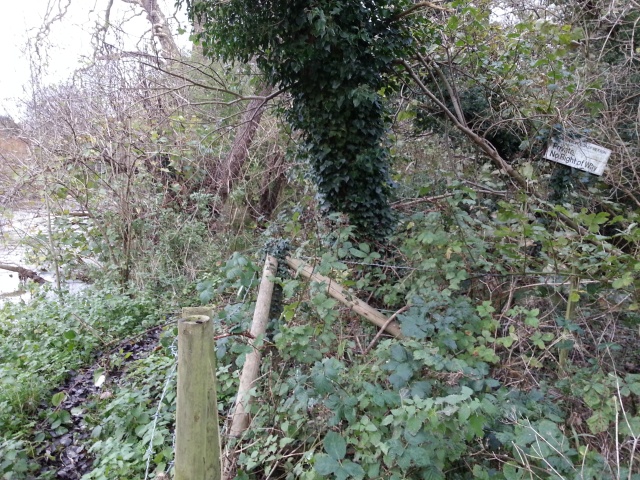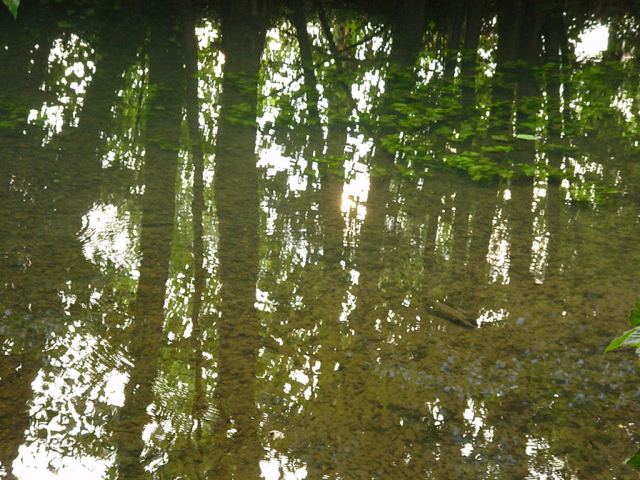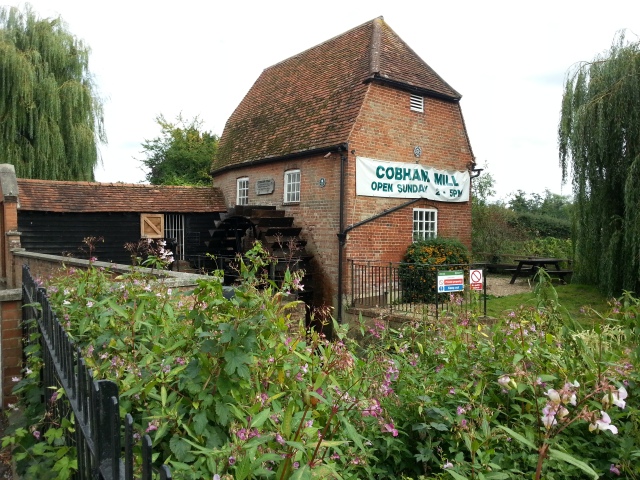As the Mole continues out of Leatherhead, it passes under the M25 and enters the village of Stoke D’Abernon near the parish church of St Mary’s. According to the church history webpage, the original church, substantial portions of which survive on the south side, was built in the late 7th or early 8th century and so belongs with the scatter of south-eastern churches that immediately followed the introduction of Christianity to southern England in 597 by St Augustine.
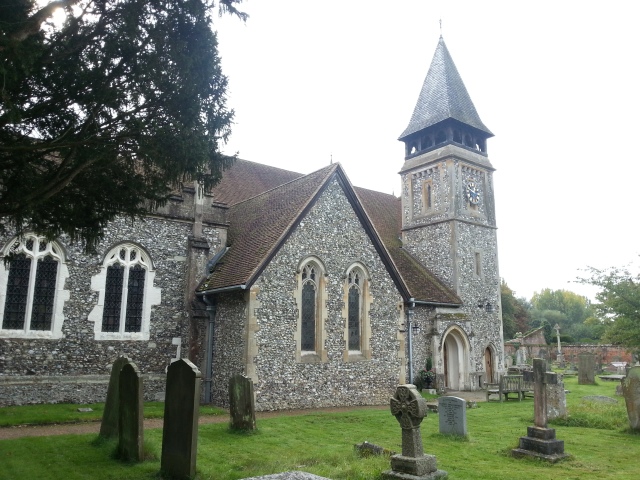
St Mary’s Church, Stoke D’Abernon
Next to the Church is the old manor house, which currently hosts an independent Prep School, Parkside School, which explains the flotation rings on the nearby bank of the Mole.
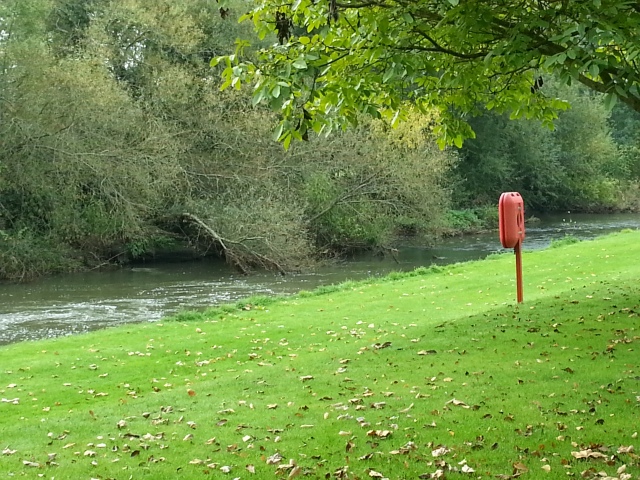
The Mole running by Parkside School and St Mary’s Church
Downside Mill
From St Mary’s church, the Mole meanders across the fields, skirting the Chelsea FC Training Ground, passing under the London – Guildford railway, arriving at the site of Downside Mill. According to the Surrey Industrial History Group, a mill is known to have existed on the site from as early as 1331 and in the eighteenth century it operated both as a corn and a paper mill prior to becoming an iron Mill.
There is a fascinating section of T.E.C Walker’s history of Cobham [1], about an agreement made in 1565 between Thomas Lyfeild Esq. of Stoke d’Abernon and Francis his wife, and Thomas à Down of Cobham, governing the stretch of the river between Lyfeild’s home at the Stoke D’Abernon manor house next to St. Mary’s Church, and the mill belonging to Thomas à Down:
“It was stated that Down’s ancestors owned a mill called Down Mill, now decayed. The “Emlin Streame” (River Mole) had always and ought to be wholly without stoppage by the lords of the manor of Stoke, and to have its direct course from the manor place of Stoke by the demesne lands of the said manor to an ancient and old wharf (or “stopp”) near to the said mill, and from the said wharf to the said mill. It was now agreed that it should be lawful for à Down to make and repair as often as need be the said mill in the place or near abouts where the same mill of late, and also in ancient times, had stood. Also the lords of Stoke (owners of the riverside land between the seat of the manor and the said old wharf called the great wharf that did enforce the said river to the said mill) should not divert the water or break the banks, and they should allow à Down to stop up any breaches which might accidentally occur, à Down might also erect, repair, fasten, and affix the said wharf unto the lands and meadow called the great meadow, and to now make the same wharf as it had been and made before this time. Also à Down and all persons coming to the mill should have access by a convenient footway leading from Stokestreat over the field called Westfeild and so over the field called the mead Feild and the mead called the great mede and so over the said water called Emlyn stream unto the mill. à Down should twice in the summer time, when he should be required, stop or shut up all the floodgates, sluices, belonging to the said mill and the wharf for the space of three hours at a time so that Lyfeild might take the fish in the same river. “
Nowadays, some of the mill buildings are still present, and have been converted to offices and an auction house. The waterworks by the mill are heavily overgrown now, as can be seen below.
It looks like the Mole splits into two parts at Downside Mill. The two waterways flow in parallel for a while, to the right of the bridleway which runs from Downside Mill to the footbridge at River Lane. But then the major stream heads off across the fields in a loop towards the footbridge at River Lane, and the other smaller water passes under the bridleway and rejoins the main river later on in Cobham.

The bigger waterway wanders across the fields from Downside Mill…
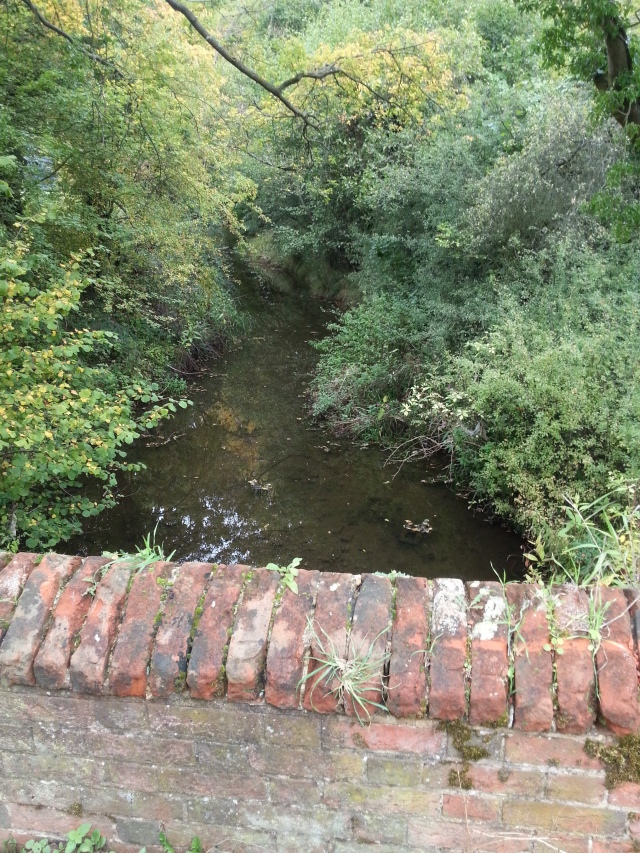
…while the smaller part passes under the bridleway and rejoins the main river later on.
Ash Ford and Cobham Cemetery
“An ancient bridle way crosses the River Mole at Ash Ford on the parish boundary between Cobham and Stoke, thus linking the two Conservation Areas of the Tilt and Downside. The ford was only safe to those on foot when the river is low. The present footbridge (apparently the first bridge of any sort on this site) was opened at Easter 1994.” [2]
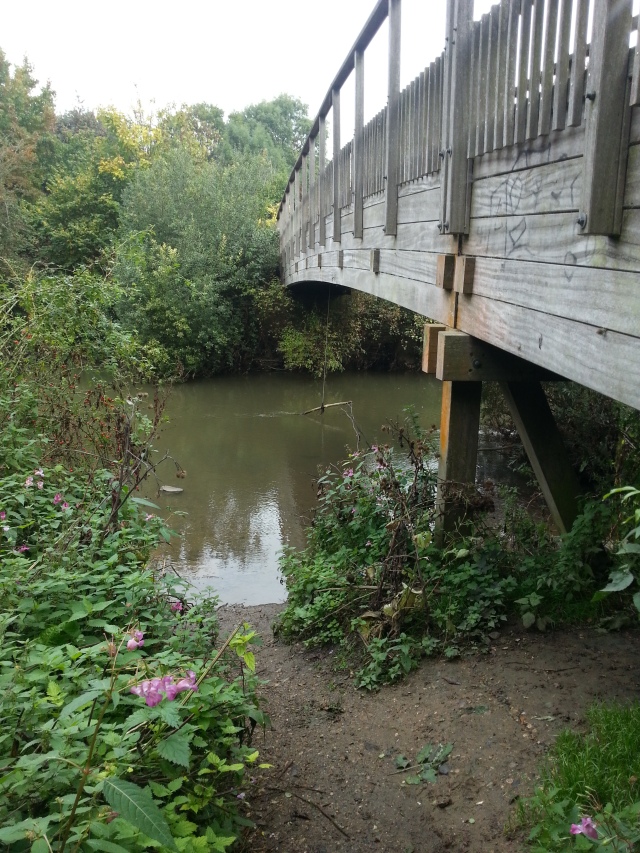
Ash Ford Bridge, River Lane, Cobham
There was at some time a mill near Ash Ford, according to T.E.C. Walker’s history of Cobham [1], being one of the three Cobham Mills mentioned in the Domesday Book: Downside Mill, Ashford Mill, and Cobham Mill. Walker says: “Cobham’s three mills were built fairly close together, since the gradient of the Mole is at its steepest near Downside mill, where in a bare half-mile the river falls about seven feet, from 80 feet to 73 feet above sea-level. If this half-mile is doubled Ash Ford is reached, and the fall for the mile is 11 or 12 feet, compared with the average fall of 16.5 inches a mile of the Thames.” The Mill at Ash Ford had apparently ceased operation by 1598, and Walker suggests that it might be connected with the land known as Mill field and Mill meadow which the tithe map of 1845 shows on the site of Cobham cemetery.
Downriver from the Ash Ford Bridge, the Mole flows on into the centre of Cobham, skirting Cobham Cemetry.
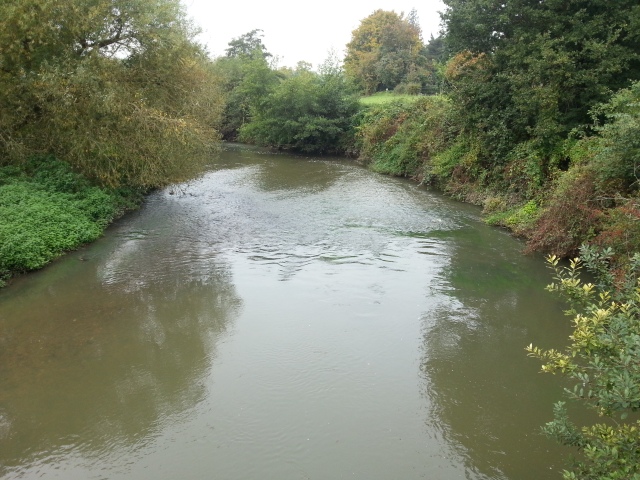
The view down-river from Ash Ford Bridge. Cobham Cemetery is on the right bank.
Notes:
[1] The River Mole: Its Mills, Fisheries and Bridges: a chapter in Cobham: Manorial History, by T. E. C. Walker, F.S.A p. 59 onwards.
[2] Ash Ford Bridge page at Elmbridge online.
